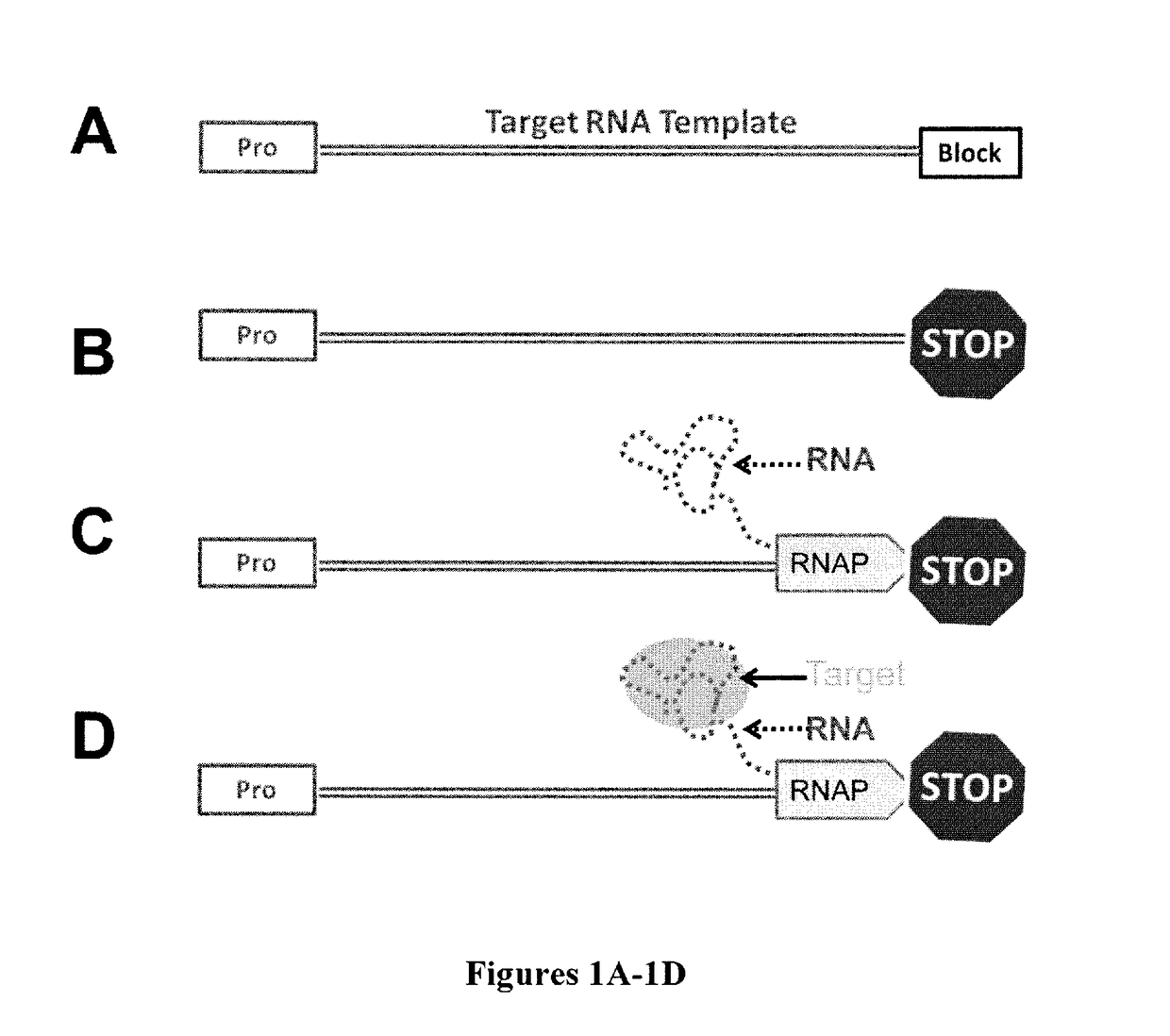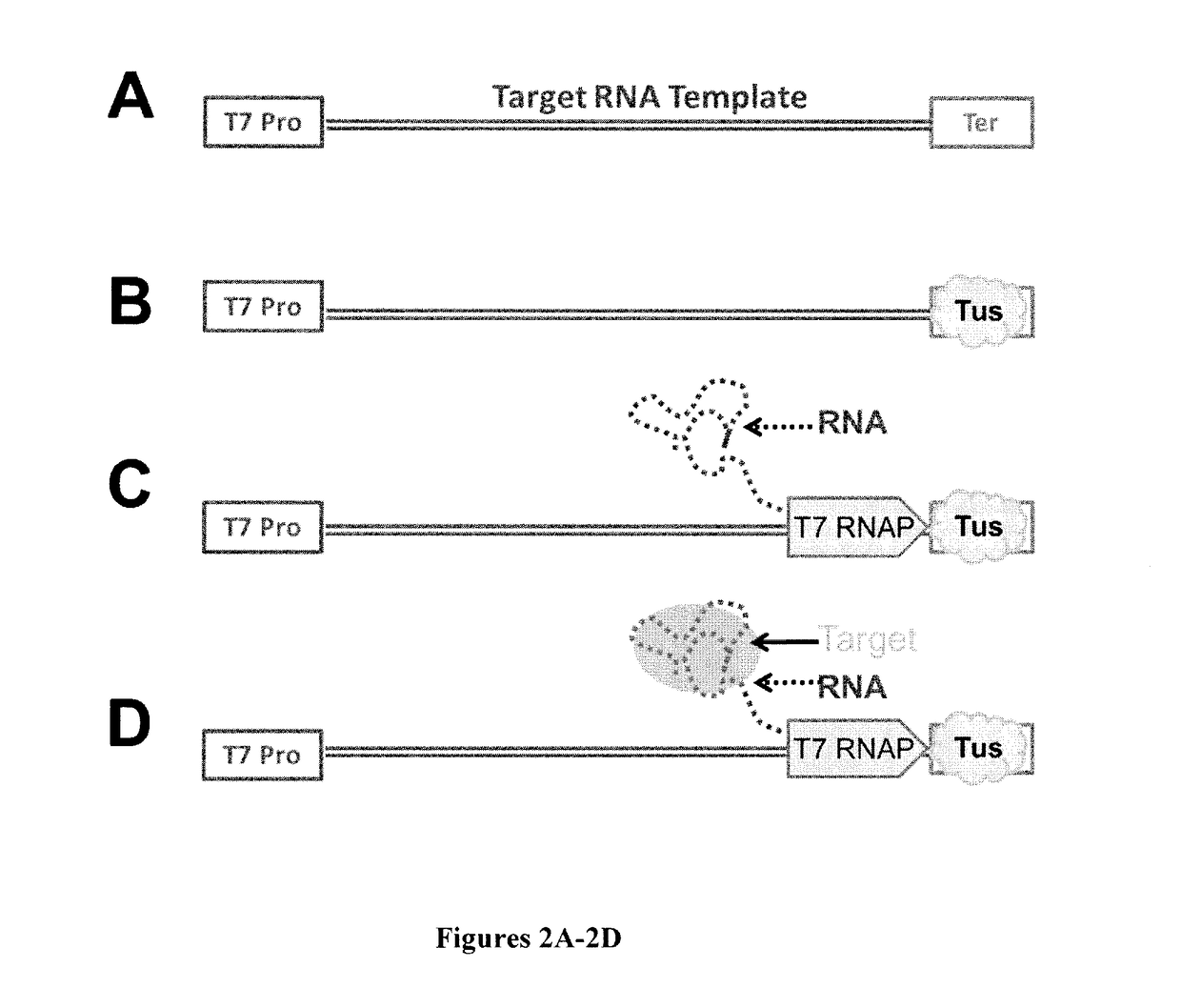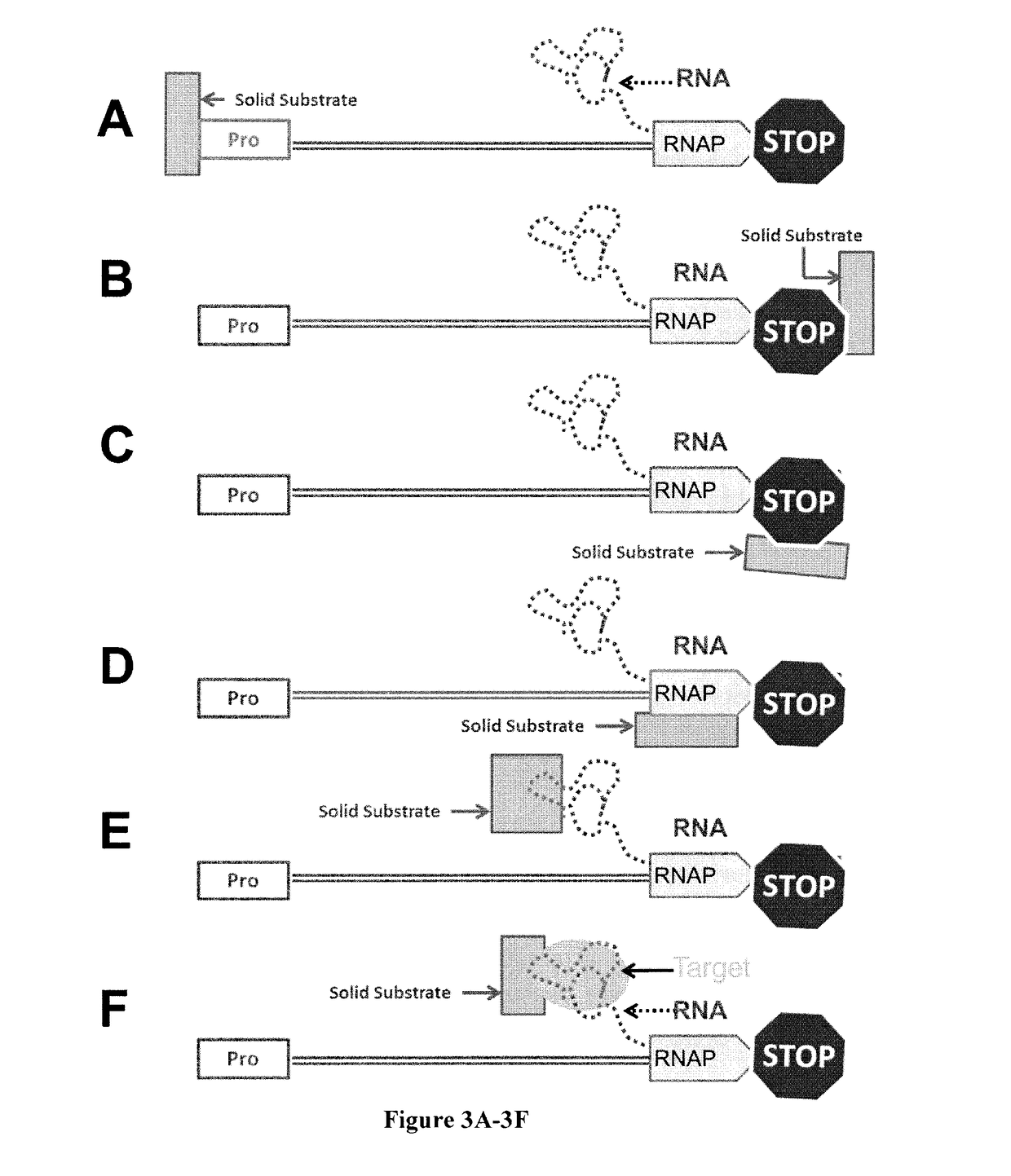High-throughput RNA interaction assay
a high-throughput, assay technology, applied in the direction of material analysis, biochemistry apparatus and processes, instruments, etc., can solve the problem that none of these assays is high-throughput or capable of processing multiple target molecules and millions of different rnas at the same time, and achieves the effect of facilitating high-throughput multiplexing detection of a plurality of rna-target molecule interactions simultaneously
- Summary
- Abstract
- Description
- Claims
- Application Information
AI Technical Summary
Benefits of technology
Problems solved by technology
Method used
Image
Examples
example 1
and Proteins
[0062]The following buffers were used for the experiments described herein: 1×T7 Transcription buffer is composed of 30 mM HEPES pH 7.8, 80 mM Potassium Glutamate, 15 mM MgAc, 0.25 mM EDTA, 5 mM DTT, 0.05% Tween-20, 2 mM Spermidine; Tus binding buffer is composed of 10×T7 transcription buffer, 32.4 μM GST-Tus, and DEPC water; multiple round transcription mix is composed of 10×T7 transcription buffer, 0.1 units / μL, YIPP, superase inhibitor, 2.5 mM rNTP mix, T7 RNAP (4 mg / mL) and DEPC water; the klenow enzyme mix is composed of 10×NEB buffer 2, mM dNTPs, Klenow exo-enzyme (NEB), 20% tween, and DEPC water; GFP aptamer binding buffer is composed of 10×PBS, 1M MgCl2, 20% Tween-20, superase inhibitor and DEPC water; primer rehybridization buffer is composed of 100 μM IllumFORAdapt-DBS-IllumFORSeq and Illumina® Hyb 1 Buffer. The following proteins used in these experiments were overexpressed in E. coli and purified by standard molecular biology techniques: 6×His-EGFP-mOrange, 6...
example 2
oretic Mobility Shift Assay (EMSA)
[0063]EMSA was performed to resolve DNAs engaged in different complexes with Tus, T7 RNA polymerase, and RNA. A DNA template containing the GFP aptamer template flanked by a T7 RNA polymerase promoter at the 5′ end and a Tus binding element (Ter1) at the 3′ end was prepared. This template was end labeled with 32P using polynucleotide kinase with ATP γ32P as its substrate. The resulting solution was mixed with either water or GST-Tus at 100 times the concentration of DNA in 1×T7 transcription buffer and incubated at 37° C. for thirty minutes. An equal volume of 1×T7 transcription buffer was added to the template without Tus protein, and an equal volume of 1×T7 transcription buffer, with or without the components of a transcription reaction, was added to the templates with Tus protein and incubated at 37° C. for thirty minutes. 80% glycerol was then added to the samples to a concentration of 10%, and equal volumes of the resulting reactions were run o...
example 3
tion Halting on GST Beads
[0066]DNA templates were prepared with the GFP aptamer template flanked on the 5′ end by a T7 promoter and 10 nt C-less cassette, and two Ter sites on its 3′ end (FIG. 8A). First, these templates were bound to GST-Tus in 10× molar excess in 1×T7 transcription buffer for 30 minutes at 37° C. The resulting Tus-DNA complexes were incubated with glutathione coupled agarose beads in 1×T7 transcription buffer for 30 minutes at 37° C. (FIG. 8B) to achieve immobilization. An equal volume of 2× transcription solution lacking CTP was then added to the resulting bead slurry, and transcription was allowed to proceed for 30 minutes at 37° C. At this time, the chased beads were washed three times in 1×T7 transcription buffer. An equal volume of 2× transcription reaction mix lacking polymerase but containing CTP was added to the chased treatment but not the initiated control. Transcription was allowed to proceed for another 30 minutes at 37° C. The beads were washed three ...
PUM
| Property | Measurement | Unit |
|---|---|---|
| pH | aaaaa | aaaaa |
| temperature | aaaaa | aaaaa |
| fluorescence polarization | aaaaa | aaaaa |
Abstract
Description
Claims
Application Information
 Login to View More
Login to View More - R&D
- Intellectual Property
- Life Sciences
- Materials
- Tech Scout
- Unparalleled Data Quality
- Higher Quality Content
- 60% Fewer Hallucinations
Browse by: Latest US Patents, China's latest patents, Technical Efficacy Thesaurus, Application Domain, Technology Topic, Popular Technical Reports.
© 2025 PatSnap. All rights reserved.Legal|Privacy policy|Modern Slavery Act Transparency Statement|Sitemap|About US| Contact US: help@patsnap.com



